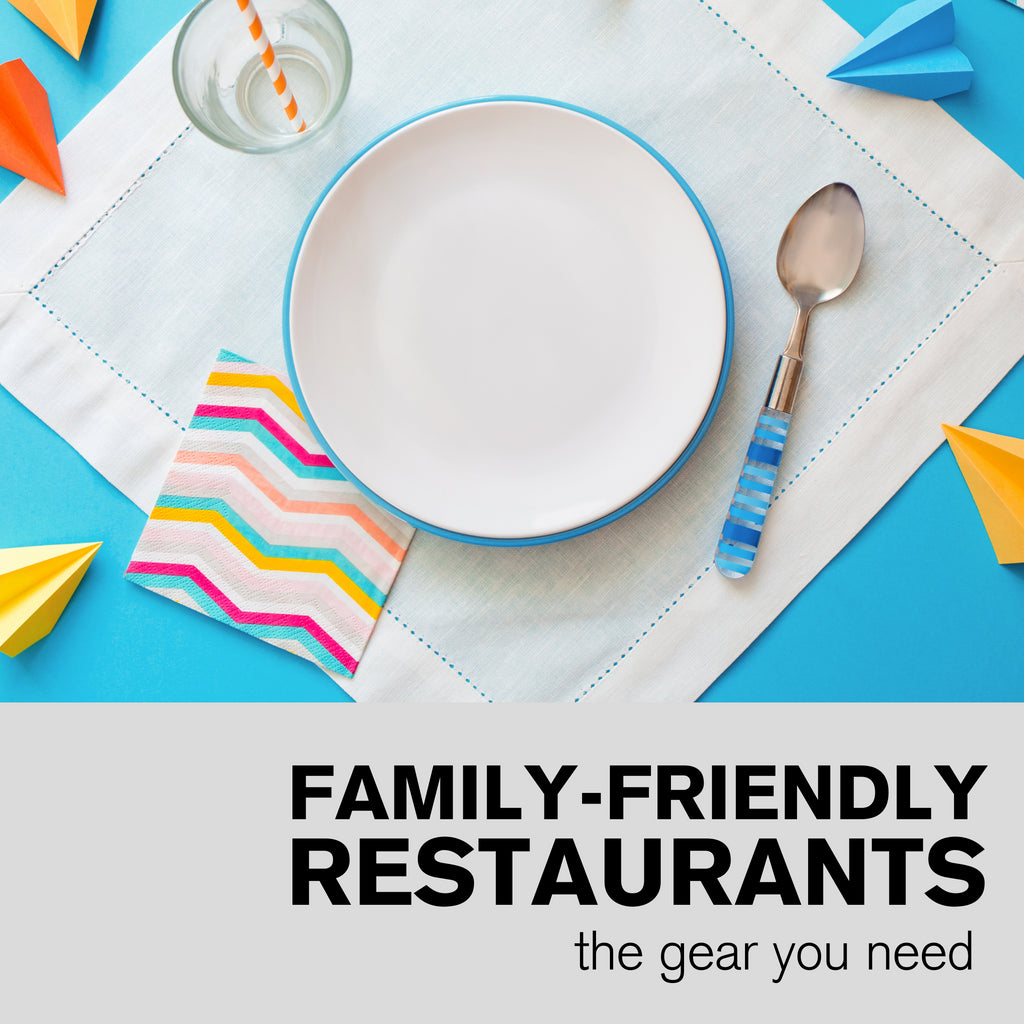Family-Friendly Restaurants - Equipment and Supplies Buying Guide
Posted by JENNIFER TUMILTY

Family-Friendly Restaurants – Equipment and Supplies Buying Guide
Young families are a demographic few restaurant owners can afford to ignore. Canada has about six million kids 14 and younger, more than 15 percent of the population. Their families dine out and order takeout more than any generation before them—and nearly half the time, the kids decide where to go. In fact, it’s estimated that making your restaurant family-friendly can increase traffic by up to 25 percent.
But how do you do it? It helps to have a kid-friendly menu or a specific kids menu and staff who know how to treat young customers. It’s also important to have the right furnishings, tableware and other essentials that will make families feel at home—and keep them coming back.

Furniture
Children may be small, but they can sure take up a lot of space in your dining room. Even before you decide what kind of tables and chairs to buy, consider where to put them. Make sure you have enough space for strollers, baby carriers and diaper bags. And place them away from things that might be dangerous for curious hands, like electrical outlets, dangling plants or blinder cords.
Tables should be big enough to accommodate the family and all their accoutrements. Consider extending tables that can offer more flexibility, and avoid high-tops, which are not only uncomfortable for little ones but dangerous, too.
Similarly, bar stools may look cool but can be risky for kids. Lower chairs are safer and offer flexibility for booster seats or car seats. Chairs without arms make it easier for little ones to get in and out without disaster. Benches can be a great solution and are trendy, too.
High chairs and booster seats
High chairs and booster seats keep little ones safe and allow them to join the fun, making everyone in the family feel welcome. No wonder a reported 70 percent of parents say they are more likely to frequent a restaurant that offers them.
There are differences between high chairs and boosters seats, though.
A high chair is a tall, freestanding chair that can be pulled up to a table; it’s ideal for infants and young toddlers. A booster seat is a short seat that needs to be fixed on top of an existing dining chair; it is meant for toddlers and children who are old enough to sit up on their own, but too little to use a regular chair.
High chairs are sturdy and slightly easier to clean, and many come with adjustable height options. Some can be turned upside down and used as a car seat prop (but make sure yours is approved for this use). However, they are more cumbersome and more expensive than booster seats.
Booster seats, on the other hand, are versatile, portable, easy to store and less expensive, but can be less sturdy and harder to clean.
Whichever you choose, make sure it follows government safety guidelines and has appropriate safety harnesses. And always clean the seat right after it’s been used.

Smallwares
Small children are still learning how to use dishes and utensils. They are curious, messy and a little bit clumsy. So even if you prefer to serve your cuisine on fine china, consider investing in plastic plates, cups and cutlery for your littlest guests. It’s safer for them, and gentler on your breakage bill.
Children’s plates should be smaller than regular-sized dinner plates, reflecting the smaller portions children eat. Consider compartment trays that keep foods separate and less likely to spill.
Child-sized plastic cups with lids, handles and straws prevent spills and messes. And when it comes to cutlery, you don’t want to hand a small child a sharp knife. Plastic forks and spoons are easier to grip and less dangerous, too.
It’s also a good idea to have some inexpensive bibs on hand. Parents who forget to bring their own will appreciate the gesture, and staff will appreciate not having to clean up the inevitable mess.

Change tables
No one wants to think about dirty diapers, but they are a reality for young families, so make dealing with them as easy and unobtrusive as possible.
That means installing change stations in restrooms—and for all genders. A whopping 73 percent of parents say they will choose a restaurant if they know changing stations are available.
It’s also a good idea to provide sanitary liners for those changing tables, and to empty garbage bins frequently, as used diapers can be extraordinarily stinky.
For older kids, it’s also helpful to offer footstools so they can reach the sink to wash their hands.

Distractions
Kids get bored easily, and a bored kid can quickly become a cranky one, which is no fun for anyone. So it’s wise to keep some fun distractions on hand for creating a kid-friendly (parent happy) dining experience.
Crayons and activity placemats are traditional, but there are lots of fun and exciting alternatives.
Technology lets you bring fun to the table, with touch-screen tablets, digital games, cartoon shows, augmented reality games and interactive floors. And don’t forget the charging stations so kids can use their own tablets or electronic games.
If you have space and budget, consider adding a safe, supervised play area with equipment that kids of all ages can use; think soft, moulded foam climbers, ramps and tunnels. Or create a creative corner with big, colourful cushions, where kids can read, draw or play games.
Just avoid small, sharp toys that can be choking hazards, and beware of other liability issues.
And don’t forget: Families who feel comfortable in your restaurant are more likely to return and to tell their friends about it, too. Those who don’t won’t hesitate to look elsewhere.
Written by Joanne Sasvari

